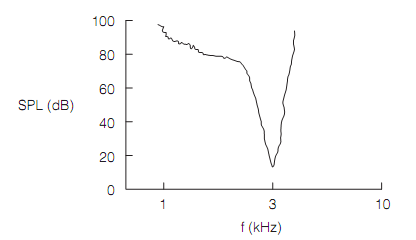Primary auditory afferents
The primary afferents contain their cell bodies in the spiral ganglion situated in the modiolus. Their centrally directed axons project via the vestibulocochlear (VIII) nerve to synapse in the cochlear nuclei of the lower pons. In humans, around 30 000 type I afferents from inner hair cells give the bulk of the output from the cochlea. Three quarters of the hair cells (the OHCs) send their output to only around 3000 type II afferents. The nature of type II cell signal is unknown. Auditory afferents fire tonically. In answer to a tone, type I afferents show an increase in firing which adapts. Whenever the sound stops, firing ceases for a short period. Therefore they display both dynamic and static responses as shown in figure below. Responses of type I afferents plotted as tuning curves is as shown in the later figure below explain that they are sharply tuned at low sound pressure levels. The frequency to which the unit is most sensitive is the characteristic frequency (CF). At high SPLs the principal afferents respond to a much broad frequency range.

Figure: Firing of auditory primary afferent (upper trace) in response to a tone (lower trace).

Figure: Tuning curve for a type I cochlear afferent. The plot displays the minimum SPL needed to evoke a response over a variety of frequencies.